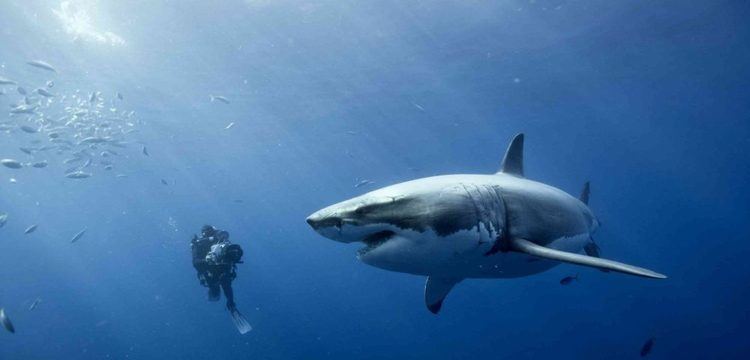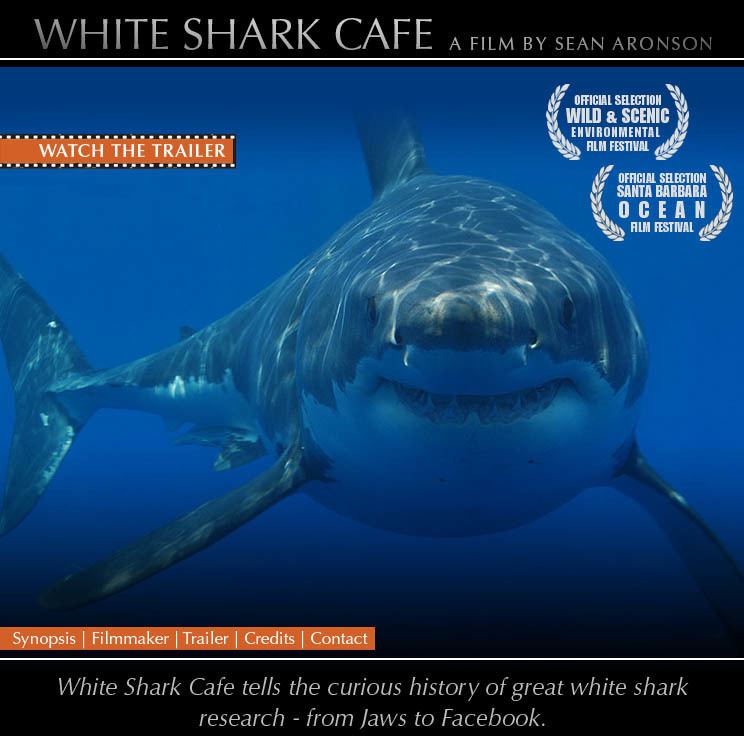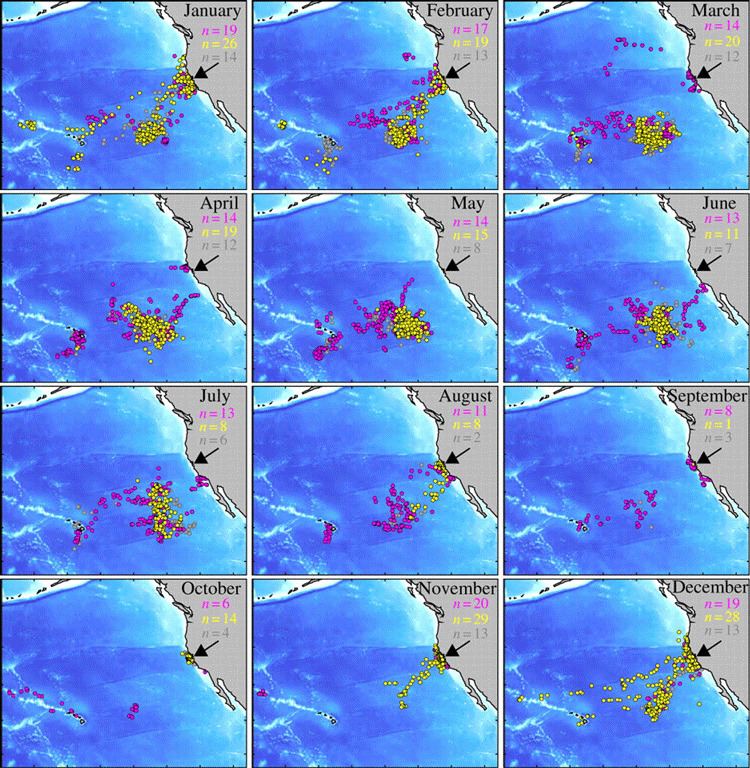 | ||
The White Shark Café is a remote mid-Pacific Ocean area noted as a winter and spring habitat of otherwise coastal great white sharks.

The area, halfway between Baja California and Hawaii, received its unofficial name in 2002 from researchers at the Monterey Bay Aquarium Research Institute who were studying the great white shark species using satellite tracking tags. They identified a zone with a radius of approximately 250 kilometres (160 mi) centered at approximately 23.37°N 132.71°W / 23.37; -132.71.
Although the area had not previously been suspected as a shark habitat, when mapping the satellite tracking data, researchers discovered that members of the species frequently travel to and loiter in the area. The reasons for this behavior have not yet been identified. The area has very little food for the animals; researchers describe it as the shark equivalent of a desert. Since both male and female great whites have been tracked there, one early hypothesis was that mating occurred there. Continued studies have revealed that juvenile sharks also travel to the area, suggesting the trip serves some other purpose.

The sharks tracked to the area came from diverse rookeries along the North American coast. They typically took up to 100 days to arrive, traveling around 1 m/s, during which they make periodic dives as deep as 3,000 feet. While at the Café, they will dive to depths of 1,000 feet as often as once every ten minutes. The purpose of the dives, either along the journey or in the Café area, is unknown.
By 2006, researchers had observed consistent migration and other behavior. Tracking data indicates that white sharks will leave feeding grounds near the coast in winter, travel to the Café, and some may even summer near Hawaii. But many linger in the "desert" where food is assumed to be scarce, often for months, before returning to the coast in time for the elephant seal breeding season (a favored prey). Researchers hope that tracking other species such as tuna may lead to an explanation based on a mobile food source.
